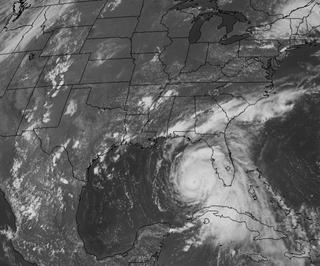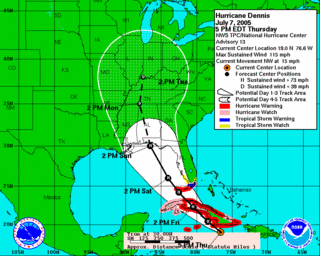The cooler weather over the fourth of July holiday weekend was a welcome break in south central Wisconsin from the persistent hot weather of June. The average high over the first five days of July in Madison has been 77 degrees, four degrees below normal. There was a little rain on Monday, 0.28 inches at the airport, but much more is needed to alleviate the drought conditions that are developing. Last night there was some spotty heavy rainfall in western and southern parts of Madison that dropped up to half an inch where I live on the near west side, but it was extremely spotty, so that if totals are averaged from over all of south central Wisconsin (most of which were dry), the amounts are negligible.
June 4th warmest on record in MadisonJune averaged a high of 83.3 and a low of 61.2 for an average temperature of 72.3. This averages 5.3 degrees above normal for the month, the fourth warmest June on record since records began in 1869. Our 72.3 degrees beats out the 72.0 degrees measured in 1995, which was the last really hot summer in recent memory (remember the July heat wave that killed hudreds in Chicago that year). In fact, it's the warmest summer since 1934, which had an average of 73.1 degrees. We were far below the incredibly warm June of 1933 though, the warmest on record, which had an average temperature of 76.0.
Although July has started out cooler than normal, it doesn't look like it's going to last. By Friday, highs are forecast to be in the mid 80s, above the seasonal normals of around 82. The longer term forecast is more uncertain, as always, but it appears that Sunday through Tuesday could be a hot period with highs near 90 each day. The computer forecast models have been fluctuating in the even longer term, originally showing some cooler air settling in from the northeast. However, the most recent forecasts are indicating that newly upgraded hurricane Dennis may crash into the central gulf coast around Monday morning, then head due north in the direction of Wisconsin. It's a long shot that we would get tropical precipitation associated with the remnants of Dennis late next week, but more likely, the hurricane remnants could prop up the hot ridge and keep a cold front from dropping in from the north. If the hot-looking extended forecast holds up, it looks like July may end up being another hot month in south central Wisconsin, maybe leading to a record warm summer. We'll have to wait and see........
Record warm great lakes temperatures for JuneAn article in the Detroit News on Sunday highlighted the unusual warm temperatures that are affecting all of the great lakes:
http://www.wzzm13.com/news/news_article.aspx?storyid=41591Water temperatures in all of the great lakes in late June were near their normal seasonal peak values, which usually occur from around late July into early September. If July ends up being hot, water temperatures could approach record high values. That would be good for swimming, but bad for fishing.
The Lake Mendota surface temperature on June 20, according to the
UW limnology department was 75 degrees, equal to the highest reading observed all of last year, which occurred in early August. If the rest of the summer is hot, count on Lake Mendota feeling like bath water.
Global warming?Although this summer is looking like it could be one of the top ten hottest in Madison, remember that last summer (2004) was one of the coolest on record. Also remember that it has snowed on May 2nd each of the last two years, with a trace this year and 1.2 inches briefly covering the ground last year, hardly an indication of global warming. There has been a strong trend in the midwest over that last 25 years toward warmer winters, but summers have not seen a similar trend. Precipitation has increased somewhat during the summertime though.
Arctic the place to watchThe summer and early fall of 2004 had the smallest areal extent of Arctic sea ice on record, continuing a trend in the Arctic toward less sea ice in the late summer, its time of least extent. Sea ice extent has changed little at its greatest extent in early spring, however. By May of this year, snow cover was near a record low areal extent in northern Canada, and by this week, snow cover was confined to the very northernmost islands of the Canadian archipelago, well below average. Hudson Bay is nearly all melted, earlier than normal, and Arctic sea ice is looking like it may challenge last year for the least late summer extent on record.
Why should we care about the Arctic? Hardly anyone lives there.The snow and ice conditions in the high arctic can have an impact on the climate of the midwest. Arctic sea ice and snow cover reflect much of the incoming solar radiation. When the sea ice and snow cover isn't present, much more solar energy can be absorbed at the surface, and when this occurs over a large area, large increases in surface temperature can result. Cold weather in the winter in Wisconsin is the result of bitterly cold and dry air masses that form in the high arctic and northern Canada, and when the jet stream allows, plunge southward. Decreased summertime snow cover and sea ice extent keeps the weather warmer longer in the fall in these far northern areas where cold air masses form. This can delay and prohibit cold air from plunging into Wisconsin, and thus give us warmer than normal falls and winters. Earlier melting in Canda such as what happened this April can give us warmer springs. But is this really global warming? It's really hard to say. It could just be a decadal trend. The weather over the next decade or two will probably give us a good idea where we're headed.
Tropical WatchThe hurricane season in the Atlantic basin has started with a bang this year. In fact, the four named storms so far this season (as of July 6th) is the earliest date ever with four named storms. Tropical storm Cindy hit southeastern Louisiana and southern Mississippi this morning with sustained winds up to 70 mph causing power outages for up to 250,000 people. Large tree limbs were down throughout New Orleans and residents were advised to stay home from work today so that cleanup crews could clear roadways. Cindy is currently moving up through northern Alabama and expected to continue spreading some heavy rainfall although winds have weakened. Hurricane Dennis is the main concern now, expected to hit Jamaica tomorrow and possibly hit the central gulf coast by late Sunday or Monday. If it continues to strengthen, it could be a category three or four at landfall, unusually strong for this early in the season. This would be due to a combination of near perfect conditions for hurricanes in the Caribbean and Gulf of Mexico, including warmer than normal sea surface temperatures and little or no wind shear that tends to weaken storms.




